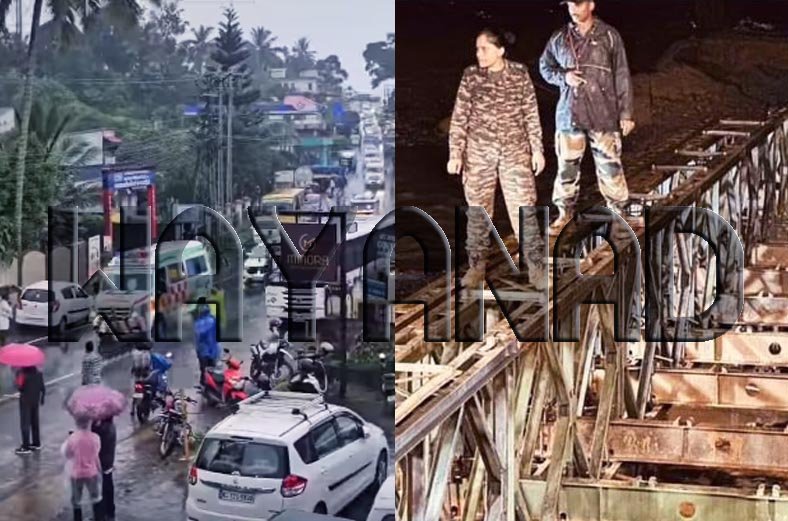In the picturesque district of Wayanad, Kerala, an ongoing natural disaster has cast a shadow over the lush green landscape. The relentless monsoon rains, which began in end-July, have triggered severe landslides across the region, resulting in widespread devastation and a rising death toll. As of today, the number of confirmed fatalities has tragically reached 288, with many more still unaccounted for. Search and rescue operations, involving local authorities, Indian military, national disaster response teams, and volunteers, are in full swing, working tirelessly to locate and aid survivors amid the rubble and debris.
The Scale of the Disaster
Wayanad, known for its serene beauty and dense forests, has been one of the hardest-hit areas in Kerala during this year’s monsoon season. The heavy rains have caused multiple landslides, particularly in the remote and hilly regions of the district. Entire villages have been buried under mud and debris, leaving a trail of destruction in their wake. Roads have been rendered impassable, and infrastructure severely damaged, complicating rescue efforts and the delivery of aid to those in need.
The worst-affected areas include Vellarimala, Mundakai and Chooralmala, where the landslides have obliterated homes, farms, and lives. The steep terrain and continuous rainfall have made it extremely challenging for rescue teams to access these areas quickly. Helicopters have been deployed to airlift stranded residents and deliver essential supplies, while ground teams navigate treacherous conditions to reach those trapped.
Coordinated Efforts and Heroic Rescues
The National Disaster Response Force (NDRF), State Disaster Response Force (SDRF), Indian Army, and local police are all actively involved in the search and rescue operations. The NDRF has deployed multiple teams equipped with specialized tools and trained in disaster response to aid in these efforts. Despite the dangers posed by ongoing rainfall and unstable terrain, the rescue personnel have shown remarkable bravery and resilience.
Volunteers from local communities, as well as various non-governmental organizations (NGOs), have also played a crucial role in the rescue operations. Many local residents have opened their homes to shelter displaced individuals, providing food, clothing, and emotional support during this difficult time. The sense of community and solidarity in Wayanad has been a beacon of hope amid the crisis.
One of the most poignant stories of survival involves a family of four who were trapped in their home in Meppadi when the landslide struck. Rescuers, after hours of arduous digging and navigating dangerous conditions, managed to reach the family, pulling them out from under the rubble. This successful rescue operation has provided a glimmer of hope to the rescuers and the community, inspiring continued efforts despite the overwhelming challenges.
Government Response and Aid
The state government of Kerala, led by Chief Minister Pinarayi Vijayan, has been actively monitoring the situation and coordinating relief efforts. The Chief Minister has announced an immediate relief package for the affected families, including financial assistance for those who have lost their homes and loved ones. Temporary shelters have been set up in schools and community centers to accommodate the displaced, with provisions for food, water, and medical care.
The central government has also extended its support, with Prime Minister Narendra Modi expressing his condolences to the victims and pledging all necessary assistance. The Indian Air Force has been involved in airlifting stranded individuals and providing logistical support for the distribution of relief materials.
Several international organizations and neighboring states have offered their assistance as well. The Red Cross has dispatched emergency response teams to aid in medical care and psychological support for the survivors. Additionally, various philanthropic organizations and individuals have contributed generously to the relief fund, ensuring that aid continues to flow into the affected areas.
The Challenges Ahead
While the immediate focus remains on search and rescue operations, the long-term challenges of rehabilitation and rebuilding loom large. The landslides have not only caused loss of life and property but have also severely impacted the local economy. Wayanad, primarily an agrarian district, has seen extensive damage to its agricultural lands, which will take years to recover. Farmers who have lost their crops and livestock face an uncertain future, requiring substantial government and community support to rebuild their lives.
Environmental experts have raised concerns about the increasing frequency and severity of such disasters in Kerala, attributing it to a combination of climate change and unplanned development. Deforestation, construction on steep slopes, and inadequate drainage systems have exacerbated the impact of the monsoons, leading to catastrophic landslides. There is an urgent need for sustainable development practices and better disaster preparedness to mitigate the risks of future calamities.
The Human Spirit Amid Adversity
Despite the immense challenges, the spirit of resilience and solidarity among the people of Wayanad shines through. Stories of neighbors rescuing each other, volunteers working round the clock, and the collective efforts of various agencies and organizations underscore the strength of the human spirit in the face of adversity. The community’s response to this disaster serves as a testament to their unwavering resolve to rebuild and recover.
As the search and rescue operations continue, the hope of finding more survivors keeps the teams motivated. Every life saved is a victory against the odds, a reminder that even in the darkest times, humanity can prevail. The journey to recovery will be long and arduous, but with the continued support of the government, NGOs, and the international community, Wayanad will rebuild and emerge stronger from this tragedy.
Conclusion
The landslide disaster in Wayanad, Kerala, has highlighted the vulnerability of regions prone to natural calamities and the urgent need for proactive measures to address such challenges. The current focus remains on rescue and relief operations, with a collective effort to ensure that every possible survivor is found and every affected individual receives the necessary support. As the district navigates through this crisis, the resilience and unity of the people of Wayanad provide hope for a brighter and more secure future.


